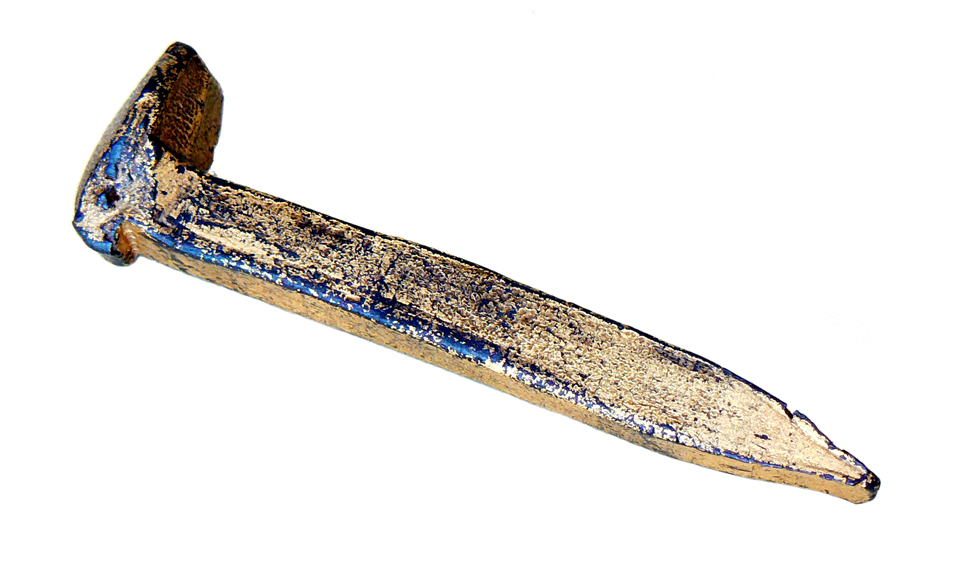 Displayed on the central table in Henry W. Longfellow’s study is this gold-painted railroad spike. Sent to Longfellow by an acquaintance, the spike is from the railroad laid by the citizens of Elberon, New Jersey over which President James Garfield traveled to a seaside cottage in an effort to recover from an assassination attempt.
Displayed on the central table in Henry W. Longfellow’s study is this gold-painted railroad spike. Sent to Longfellow by an acquaintance, the spike is from the railroad laid by the citizens of Elberon, New Jersey over which President James Garfield traveled to a seaside cottage in an effort to recover from an assassination attempt.President Garfield was shot by Charles Guiteau, a mentally unstable office seeker, on July 2, 1881. Garfield survived for over two months after being shot, enduring several failed attempts by doctors to locate and remove the bullet that had lodged in his back. He eventually passed away on September 19. Prior to his death Garfield was brought from Washington D.C. to the New Jersey shore in the hope that the fresh sea breezes would aid in his recovery. Fearing that the half-mile carriage ride from the train station to the seaside cottage where he would be staying was too rough of a ride, Elberon residents put down a railroad track enabling Garfield to take the train right to the door of his cottage. After Garfield’s death, the track was taken up and this spike was acquired by George Zabriskie Gray.
Gray was the dean of the Episcopal Theological School in Cambridge, located adjacent to Longfellow’s own property. In 1878 Gray lived across Brattle Street from Longfellow in the house owned by the poet’s son Ernest, who was travelling in Europe at the time.
Gray sent the spike to Longfellow in October 1881. On November 1, Longfellow wrote to Gray and thanked him for the gift, writing “I am very much obliged to you for this relic from Elberon. As a reminder of a tragic event in our history, it will grow more and more valuable as time goes on, and I thank you for confiding it to my keeping.”
